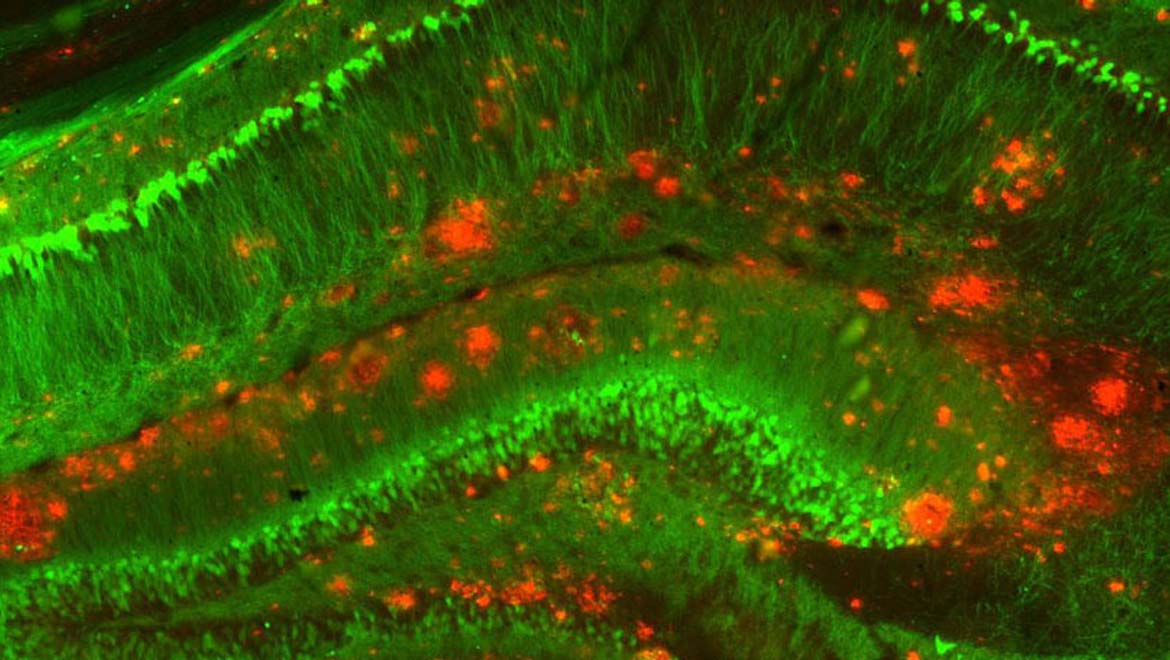As of 2017, more than 5 million Americans are living with Alzheimer’s, and the numbers are predicted to rise to 16 million in the next 30 years or so.
As this disease is a neurodegenerative form of dementia, including memory loss and behavioral changes, scientists around the world are trying to study components of the brain and different parts of the body in order to better understand its origin.
In a groundbreaking paper published in October 2017, a group of researchers and neurologists are suggesting that the key protein, amyloid-beta (A-beta) that is responsible for plaque formation or accumulation among the neurons, and therefore an onset of Alzheimer’s, could be manufactured somewhere in the body, like blood platelets or skin cells, and consequently travel and collect in the brain.
The Protein Can Travel From Blood To Brain
What are beta amyloid plaques? Surrounding the membrane of nerve cells is a protein called beta amyloid, which, sometimes, clump together to form plaques or sticky deposits. This further results in blockages of synaptic cell signaling and causes a trigger in inflammation. In patients with Alzheimer’s, large amounts of a specific variety called beta amyloid 42 is known to disrupt cell function and cause damage to the brain.
In a research conducted in 2006, a group of experts including Mathias Jucker of the University of Tübingen, Germany, found that on injecting amyloid protein samples into the blood of healthy mice, it landed up in their brains. But, experts, unsure whether that that was enough to cause A-beta plaques among the neurons, performed more experiments.
A process called parabiosis, namely the joining of two individuals anatomically, was applied on six pairs of mice, where one was normal and the other engineered to produce the A-beta protein of humans. This extreme means of blood-sharing was carried out for a year and it concluded in the mice brains showing high levels of accumulation of the protein, and the plaques were also found inside the normal mice of the joined pairs. This was proof that A-beta was transmitted by blood and then traveled to the brains of both the genetically modified- and normal mice causing Alzheimer-like symptoms in the long run.
In relation to this, co-author of the paper, Weihen Song of the University of British Columbia, mentioned that: “We still think of Alzheimer’s as a brain disorder” and, chiefly, not because of the factors found in blood. Adding to this, University College, London, neurologist, John Collinge warns that this study doesn’t prove that Alzheimer’s is contagious: “The bottom line is that this study is thought-provoking but shouldn’t cause alarm”, he said: “There really isn’t any evidence that you can transmit Alzheimer’s disease by blood transfusion.”
What This Means For The Future
Scientists are of the view that such studies can expand their area of research because under normal circumstances the brain is difficult to access. This could, in turn, help in the development of novel targeted drug therapies that could impede the disease without direct impact on the brain.
Also, since Alzheimer’s progresses quickly with age, experiments like these will be able to confirm the stage it is in, how different forms of A-beta can influence it and how plaques among the nerve cells can be avoided instead, pushing it out through the kidneys.
Top image: BRAIN BUILDUP, One of the changes to brains with Alzheimer’s disease is the buildup of clumps of a protein called amyloid-beta (red) among nerve cells (green, mouse brain shown). (Image source: Sciencenews.org)
References:
Alzheimer’s Association, https://www.alz.org/braintour/plaques.asp, (accessed 7 Dec 2017)
Sanders, L. (2017), Science News, https://www.sciencenews.org/article/alzheimers-disease-amyloid-protein-blood-brain, (accessed 7 Dec 2017)
Hamzelou, J. (2010), New Scientist, https://www.newscientist.com/article/dn19607-alzheimers-protein-can-move-from-blood-to-brain/, (accessed 8 Dec 2017)
NIH, https://www.nia.nih.gov/health/what-happens-brain-alzheimers-disease, (accessed 8 Dec 2017)
Haridy, R. (2017), New Atlas, https://newatlas.com/alzheimers-amyloid-beta-proteins-outside-brain/51999/, (accessed 8 Dec 2017)
Alzheimer’s Association, https://www.alz.org/facts/, (accessed 8 Dec 2017)







No comment